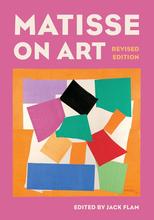More about Dance (I)
- All
- Info
- Shop

Sr. Contributor
Dance (I) is Matisse's Jan Brady. It's usually sidelined in favor of his Marcia, Dance (II).
It isn't difficult to see why. (I) is a preparatory sketch for (II). They're both a tribute to nude jigs, but (II) just has the better moves. Self-made Russian millionaire and Matisse bestie Sergei Shchukin asked the painter for a couple murals to decorate his mansion walls. Shchukin was a little apprehensive at first about having giant jiggling boobies be the mural to greet his hoighty-toighty friends. But, then he decided "to hell with it." Ain't nothing wrong with a little T&A to get the society people talking.
The definition for self-made, Shchukin bought up a bunch of textiles when Russia was going through tough times during the Revolution of 1905 and then jacked up the prices when people had money again. Unscrupulous? Maybe bordering on WTF, Shchukin. But so it goes. Shchukin got the idea for such a mural when he and Matisse were in Picasso's studio rubbing elbows and discussing the latter's latest: Les Demoiselles d'Avignon.
Dance (I) might not attract the attention of its more talented younger sibling, but it's had a more charmed life in many ways. Walter P. Chrysler, Jr., bought the painting from Matisse while on a walkabout through Europe just after World War I. It stayed in his collection until Nelson Rockefeller bought it specifically to donate in honor of Alfred Barr, Jr., the first director of the Museum of Modern Art in New York. Which was founded in no small part due to Walter Chrysler, Jr.'s efforts. If it all seems a little nepotistic, it's because it is. The art collection world is pretty small at that level, then and now.

Contributor
Dance (l) was a study for Dance (II), which is in The Hermitage Museum in St. Petersburg.
It was commissioned by Sergei Shchukin, Matisse's #1 collector, together with a second painting, Music.
Shchukin initially he had some reservations about the painting. He wrote, "Monsieur Matisse, your painting the Dance is very beautiful. But there's one thing that bothers me. You've got to understand, the Dance is meant for Moscow. And Moscow is in Asia. People there don't like nudity. So, I don't have paintings in my house with naked people, aside from one Renoir, but that's permitted."
Shchukin eventually accepted both paintings and hung them by the staircase in his Moscow mansion.
In 1910, Dance (l) was criticized in Paris for being too flat, and because its nudes were over simplified. In my opinion, this painting is far from being flat and bursts with energy. Makes sense, as Matisse once said that dance meant, "life and rhythm."

















